A good tactics game is able to take the thinky pain of an RTS and match it with the palatability of a turn based RPG. Lightbulb Crew’s, Othercide manages to burn those synapses just right.
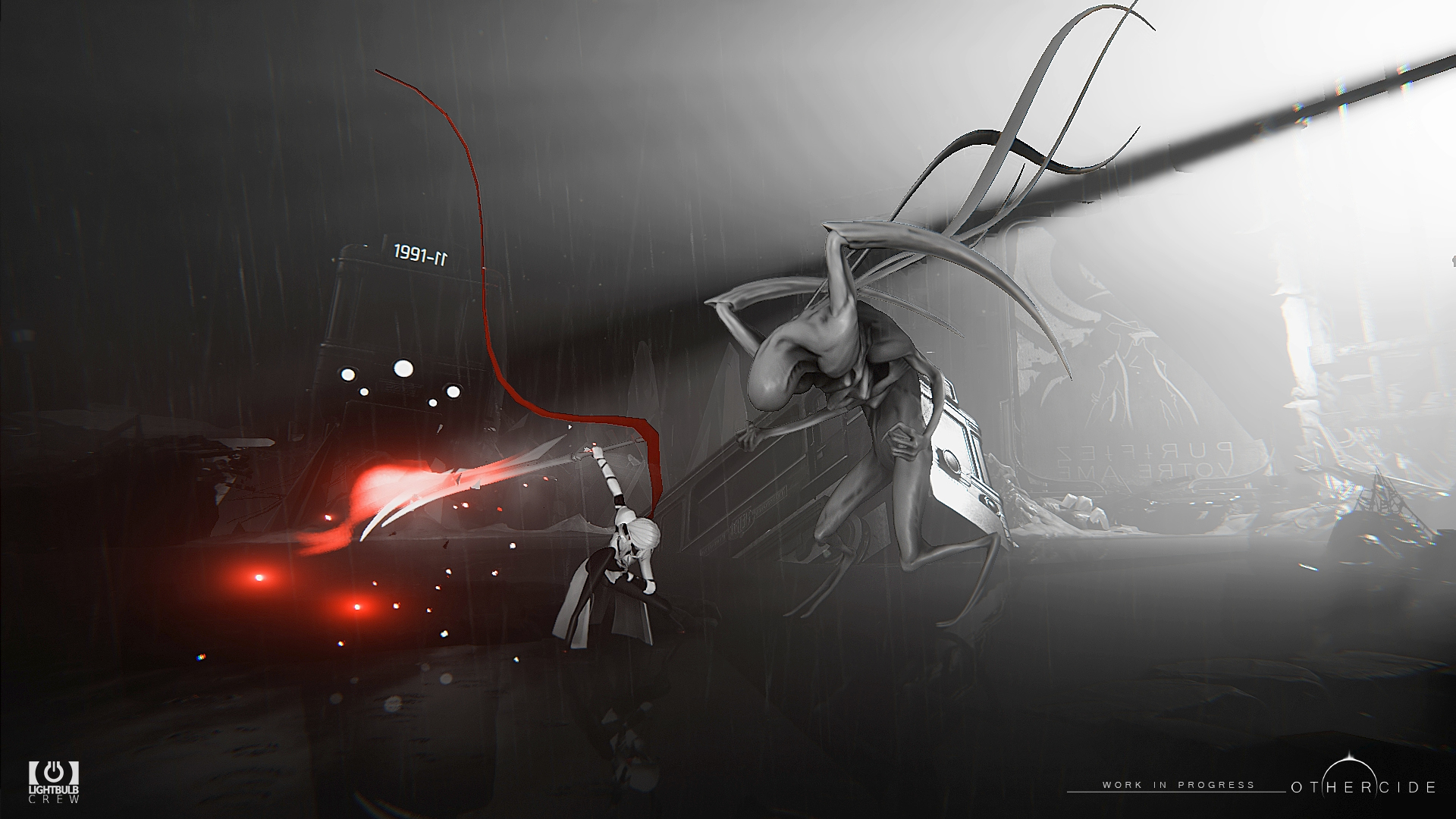
Othercide wears its influences on its sleeve, but I’m not complaining.
With a red, black, and white color palette reminiscent of the Grendel comics, Othercide places you in control of a team of no more than four. These frail looking women (referred to as daughters) cut a path through increasingly gruesome monsters.
The Blood of Your Enemies
Art director, Alexandre Chaudret, mentioned the mangas Berserk and Claymore being big influences. You can see both titles at play as white haired women fight disturbing legions of beasts.
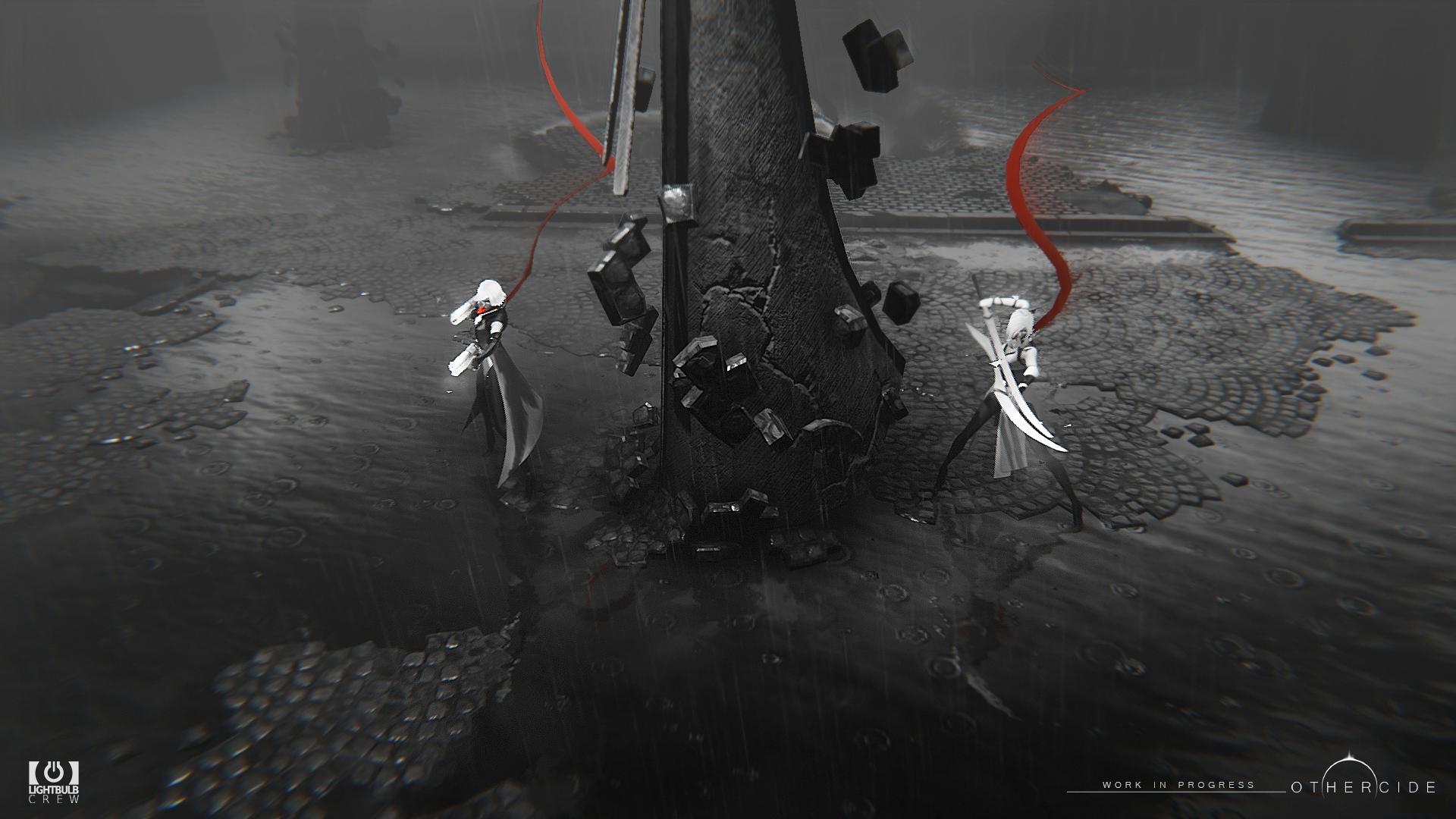
It has a Devil May Cry meets Bloodborne “dark-but-cool” atmosphere.
Othercide features a selection of three classes, with each daughter coming preassigned to a role. The classes play well off each other, with skills ranging from status effects, to jumping to an opponent and attacking. Things you’ve grown to expect from the genre. It seems like business as usual, sans highly stylized art, but that’s where the similarities between Othercide and other tactics games end.
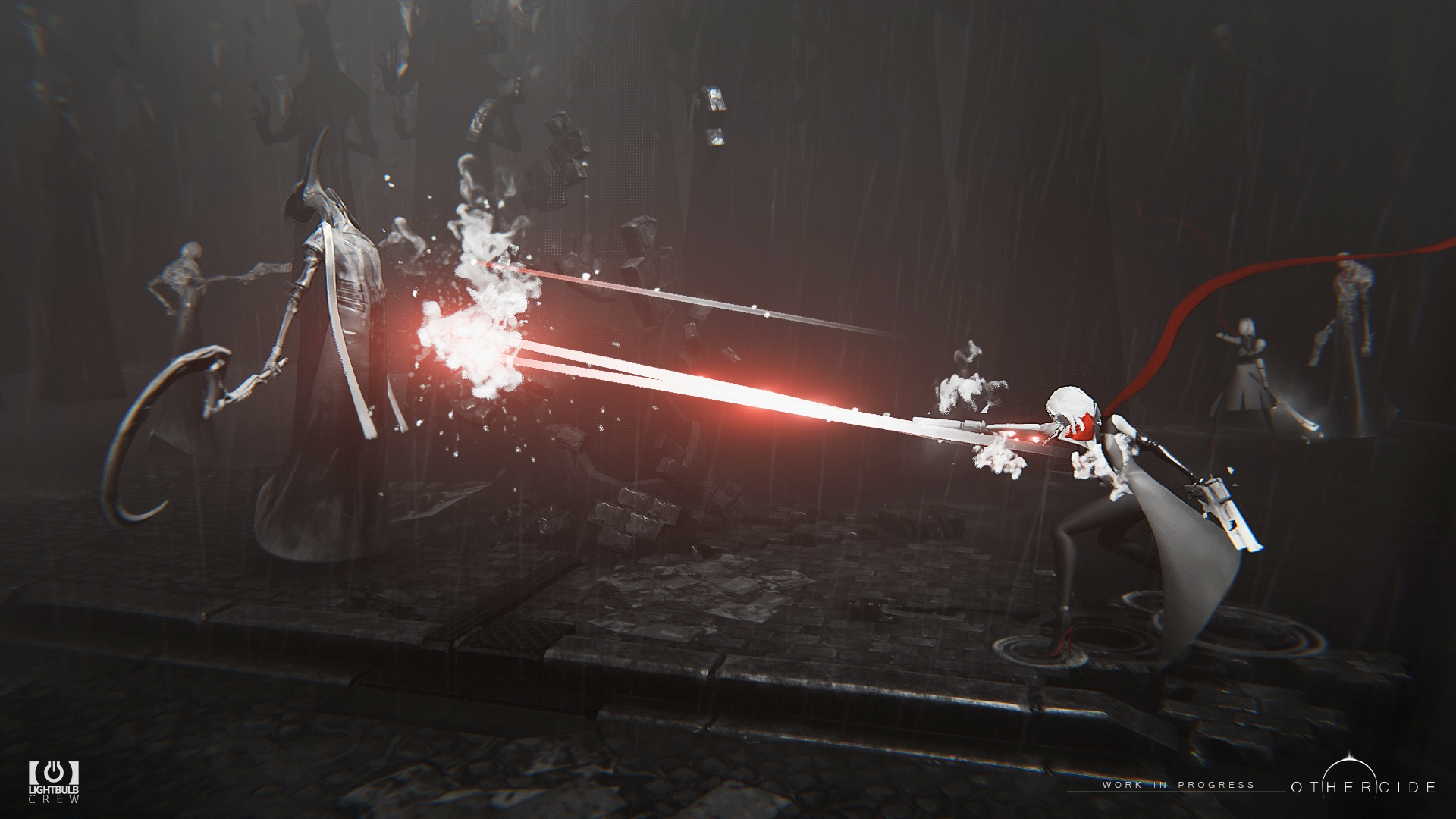
If the art didn’t tip you off, Othercide is a completely unforgiving tactical meat grinder.
Mistaking Othercide‘s minimalism for a more simplistic dip into tactics games is a great way to die. The damage in Othercide can only be referred to as Ninja Gaiden-esque. Monsters are as brutal as they are terrifying, with even basic enemies putting out incredible amounts of damage.
Give and Take
This is not to say that the daughters lack the capacity to inflict their own damage, but even the most stalwart of your troops is not built to last. This brings me to Othercide‘s unique grab and the primary way you’ll be combating the high difficulty: the initiative sequence system.
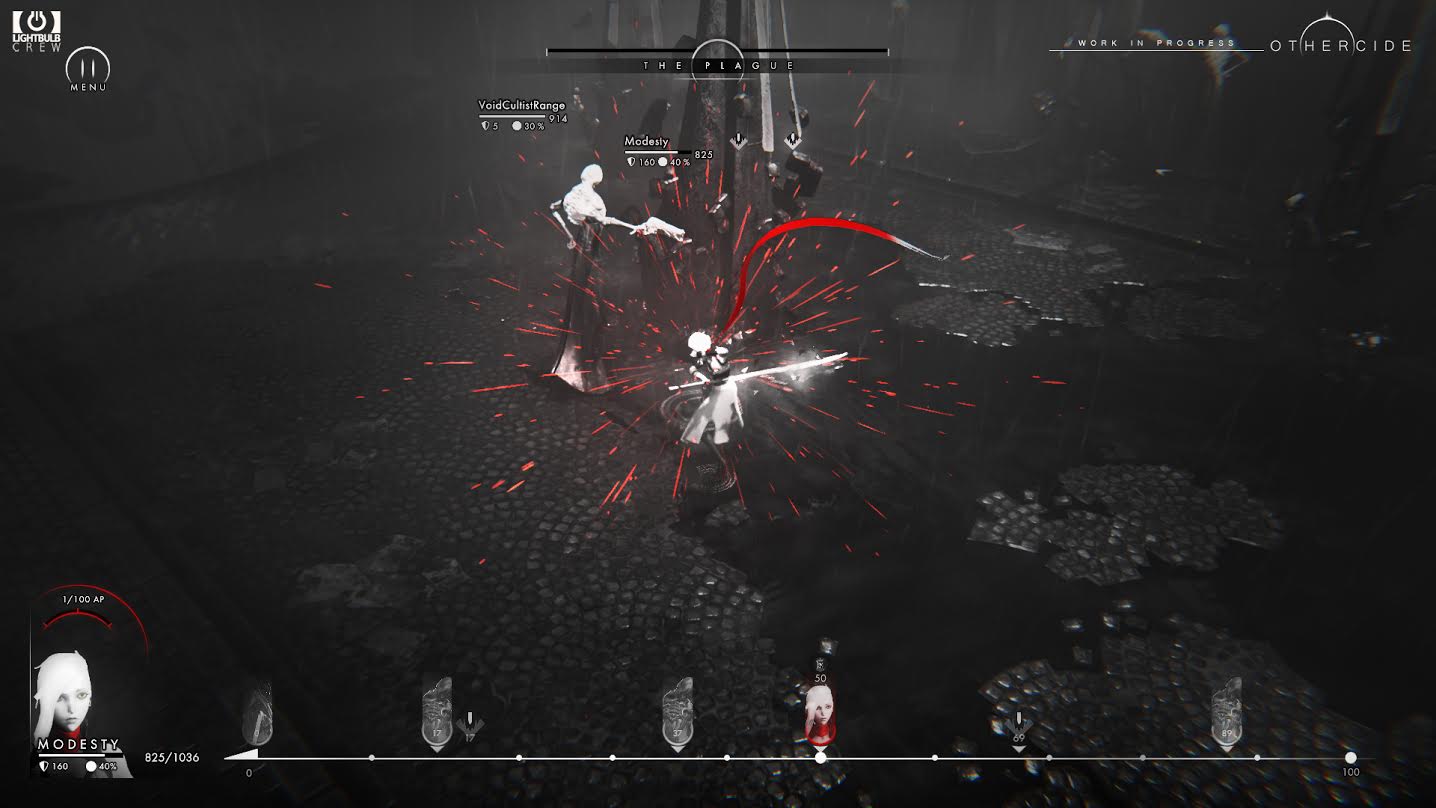
The initiative sequence system, Othercide’s bread and butter, is one of the most rewarding mechanics I’ve ever played with in a tactics game.
During every battle there is a timeline at the bottom of the screen that displays the turn order for each unit on the field. This is Othercide‘s initiative sequence system. It allows for the player to plan ahead two fold; not only by watching enemy positions, but also anticipating enemy turn order.
Eyes on the Prize
This lets players attack the enemy before they get a chance to strike back. Such tactics can serve to delay enemy turns, if not outright kill them. If an enemy close to your support has a turn coming up you’ll know which guy to focus down.

As powerful as it may seem to see enemy moves before they’re made, the initiative sequence system helps you break even more than makes you overpowered.
The initiative sequence system is both the greatest strength and the most punishing teaching tool Othercide has. Set all your dominoes to fall just right and you’ll feel like some kind of genius anime protagonist. One who’s able to see 1,000 steps ahead in the chess game.
When you screw up in Othercide, you can see exactly when and how you screwed up. It’s a game you play on the razor’s edge, and this is reinforced by a permadeath mechanic which means none of your team is expendable.
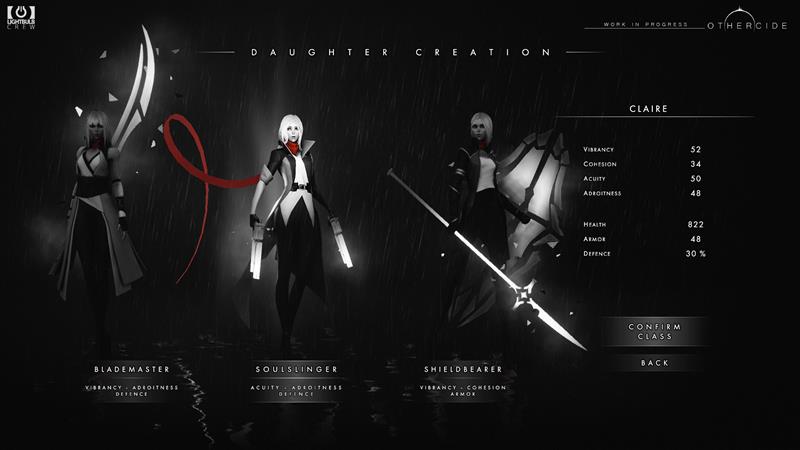
Each class has well defined strengths and weaknesses, but none encourage you to play back.
In the GDC demo, daughters had three distinct classes: shield bearer (tanky DPS), blade master (DPS), and soul slinger (ranged DPS/support). None of these classes had any way to heal themselves or each other, and this is very much a design choice.
Time Doesn’t Heal These Wounds
As daughters survive missions, they level up. This comes with increased stats and new abilities for that specific daughter, but if she dies, she’s gone. The only way to bring back your daughters is by sacrificing another. As I said earlier, the worst mistake you could make would be interpreting Othercide‘s simplicity for any kind of forgiveness. The severe punishment meted out for every error rivals only the accomplishment felt after a successful mission.

The disturbing mood of Othercide extends beyond just the world and waits for you even in the system mechanics.
Othercide is shaping up to be a delightfully dark tactics game that gives you every tool to succeed, but refuses to pull its punches even for a second. It’s currently available on Steam early access, and is slated for a Q2/Q3 release.



